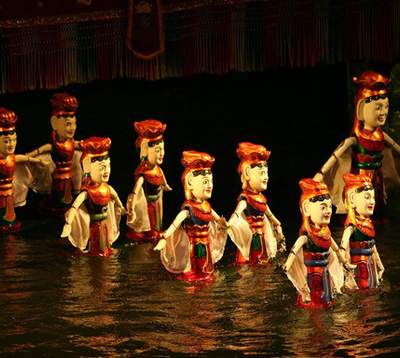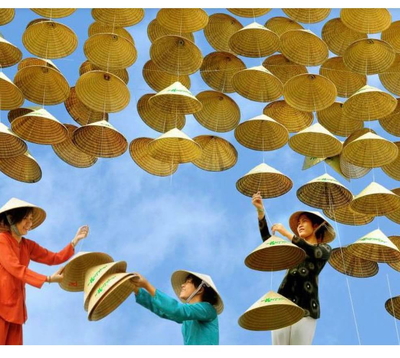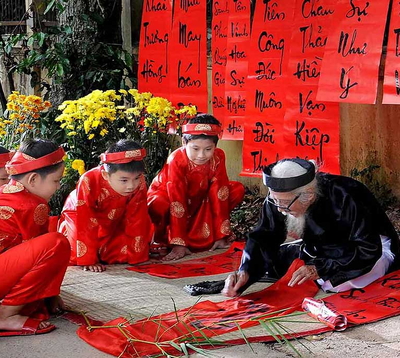Vietnamese Architecture - The Part of Vietnamese Culture
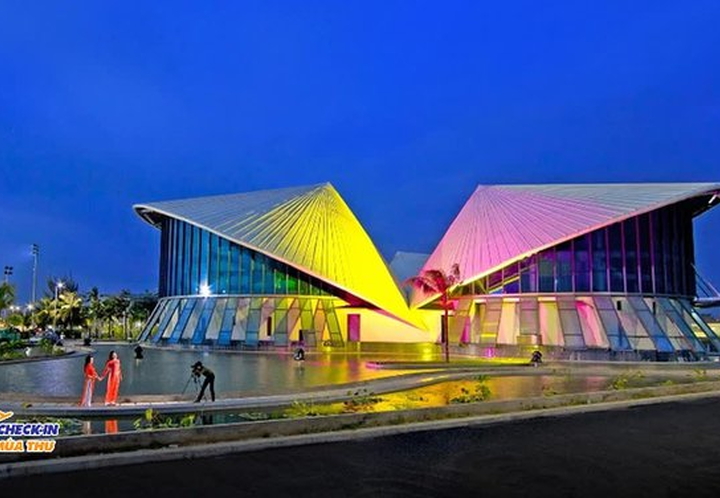
Any country's architecture reflects its culture, history, and traditions. The combination of the composition's materials, form, lines, curves, and hues creates a masterpiece that is both distinctive and lovely. Vietnamese architecture is the same as any other. From traditional stilt cottages to magnificent palaces and concrete skyscrapers, the country's architecture is a tribute to its prosperous history and bright future.
You might split Vietnam's architecture into four categories based on its historical context: Ancient architecture, Colonial architecture, Modern architecture, and Contemporary architecture.
Vietnam Ancient Architecture
The growth of Vietnamese architecture over each time of history has been distinct from one another. The original Vietnamese design was supposed to be derived from the Hung King period. At that time, people built their homes out of wood so they could better withstand attacks from wild animals. They planned their house to have two distinct forms: the first was in the form of a boat, and the second was in the form of a tortoise shell.
Ly Dynasty architecture
The Ly Dynasty of the eleventh century introduced complex Buddhist-inspired reliefs and patterns into their building. Under the Ly dynasty, Vietnamese architecture was characterized by a large number of ornamental roofs, doorways, doorsteps, banisters, and rounded sculptures. All are ideal for the environment and traditions of Vietnam.
 The Imperial Citadel of Thang Long
The Imperial Citadel of Thang LongIn 1031, the reigning monarch Ly Thai Tong constructed a staggering 950 pagodas. Throughout this period, rounded sculptures, entrance steps, decorated roofs, and balustrades were commonplace in Vietnamese architecture.
The Imperial Citadel of Thang Long, a UNESCO world heritage site, is a must-see for travelers interested in experiencing Vietnamese culture firsthand. Located in modern-day Hanoi, the citadel served as the region's political center for thirteen centuries, and will especially appeal to history aficionados. This majestic edifice is a wonderful example of medieval Vietnamese architecture.
Tran Dynasty architecture
The 13th-century Tran dynasty had its own set of beliefs and rituals that left its imprint on Vietnamese architectural history. The complexity and delineation of structures increased, and gardens were incorporated into temples and houses of worship.
Under the Tran Dynasty, the most popular structures were pagodas, houses, temples, and citadels. Binh Son Tower (Vinh Phuc province), Pho Minh Tower (Nam Dinh province), and Thai Lac pagoda are notable pagodas during this period (Hung Yen province).
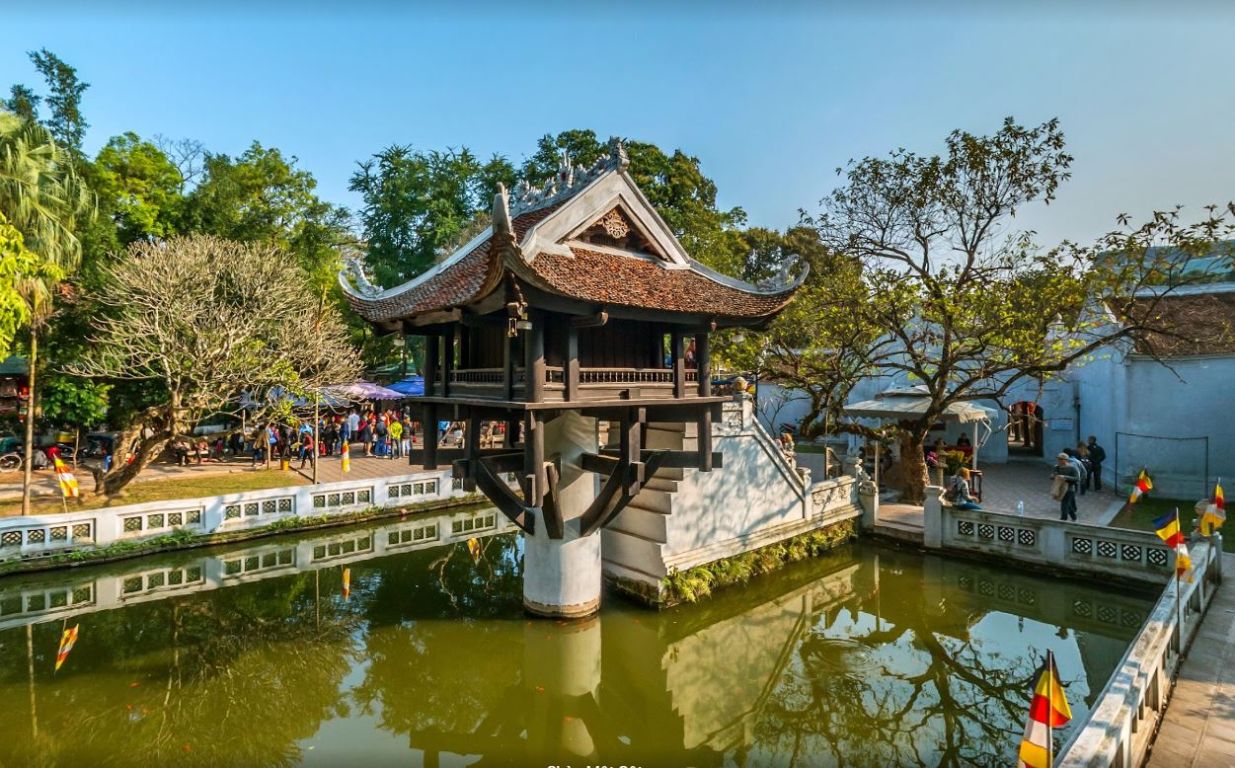
The Pho Minh temple is an excellent example of the art form of the Tran dynasty and succeeding centuries due to its intricacy and construction. The building consists of three primary sections: the entrance, the main hall, and the sanctuary. The inside garden and courtyard played a significant role in the overall structural complex. It conveys a universal opinion.
The building of royal palace was constructed with upper-level floors and corridor networks in an open-air environment ideal for tropical climates.
Le Dynasty architecture
During the 16th and 17th centuries, the Le Dynasty flourished and saw the emergence of folk art and sculpture employed in current carvings and paintings.
The Tay Phuong Pagoda and the Bang Communal House are the era's most outstanding structures. The Nguyen dynasty, which moved the capital from Thang Long to Hue in central Vietnam, was the final significant kingdom.

Despite retaining the earlier tradition of wooden homes, the constructions constructed during this time period seem more slim and lightweight. These are likewise embellished with floral, dragon, and phoenix designs and have numerous roof levels. This is what gives the roofs their lighter look, with up to eight layers of porcelain and ceramic filling the gap between the layers (known as Co-Diem).
Nguyen Dynasty architecture
Vietnamese Architecture under the Nguyen Dynasty is located in the Hue Citadel, Ngoc Son Temple, and a portion of the Temple of Literature. These structures date from the early 17th century through the 19th century.
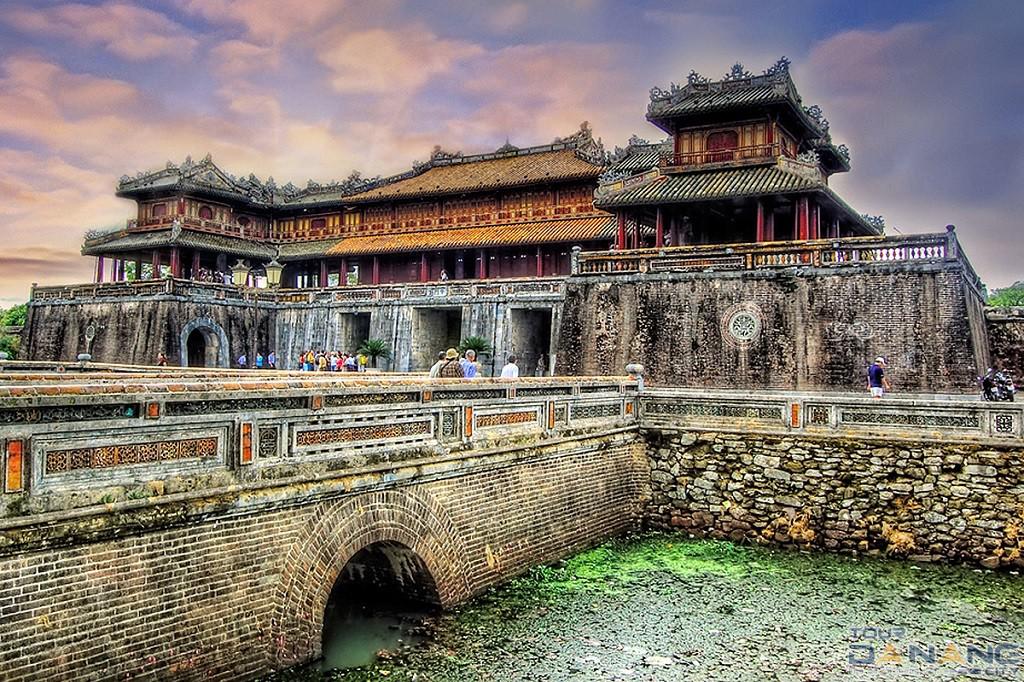
As Hue became the capital during the Nguyen Dynasty, growth in the North stagnated. In Thang Long, the Khue Van Cac pavilion, the Ngoc Son temple, and other constructions were constructed. In contrast, a garden-house complex was constructed for the Hue project. Today, the surviving citadels, palaces, tombs, and garden homes in Hue display a design that is unique from the tube-shaped dwellings in Ha Noi.
Throughout Vietnam's history, you can see the development of its particular architecture, which has persisted to the present day. Although many of them have been destroyed by man-made conflicts, natural calamities, the passage of time, and the harshness of this tropical nation.
Colonial Architecture
Colonial mansions and cathedrals
A century of French colonization left its impact on the café culture, culinary influences, and architecture of Vietnam. The French inaugurated an age of modernism and engineering in the West. This is shown by the Long Biên Bridge, a Hanoi icon constructed between 1899 and 1902 and renovated several times.
The French Quarter in Hanoi is the best spot to see colonial French architecture and urban design. Enjoy a night at the beautiful Opera House, constructed in 1911, or spend the night in the Hotel Metropole, conceived by two French businessmen in 1901.
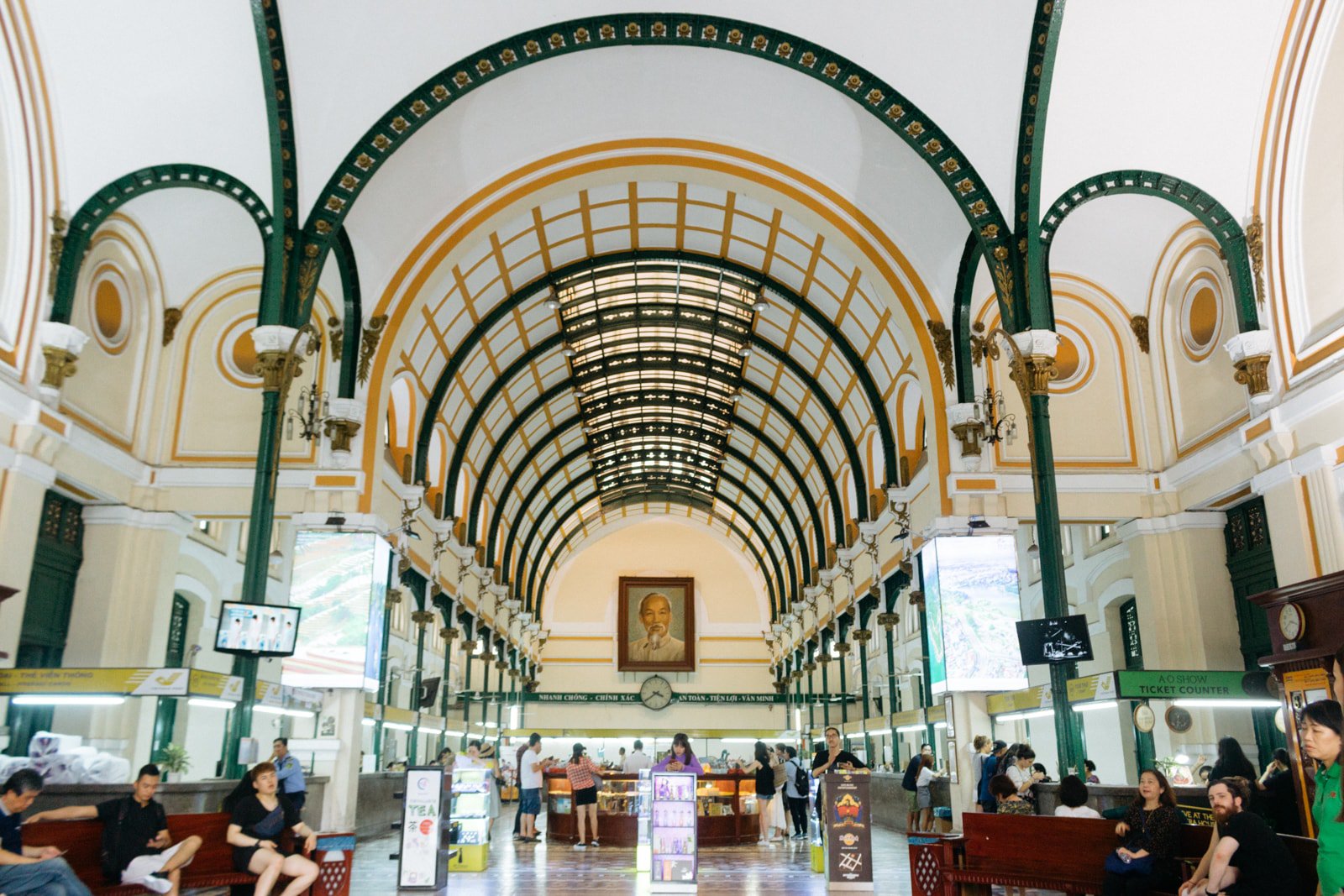
While the European style brought by the French was first popular in Vietnam, it eventually adapted to local tastes. This architectural blend of Vietnamese and French styles is distinctive and intriguing.
The Phát Dim Cathedral in Ninh Binh, the Museum of Fine Arts, and Notre Dame Cathedral in Ho Chi Minh City, as well as many public structures in Hanoi and villas in Dalat and Hue, serve as examples of this intriguing synthesis of two continents.
Brutalist Public Buildings
After World War II, Brutalism as an architectural style grew in popularity in the middle of the 20th century. In Vietnam, brutalist architecture, characterized by its use of concrete, cubist design, and stress on symmetry, grew in popularity. The Ho Chi Minh Mausoleum in Hanoi's Ba Dinh District is one of the most popular tourist destinations in Vietnam. This colossal monument is a breathtaking example of brutalism and the ultimate resting place of Vietnam's adored national hero.
In the south, the Reunification Palace has more brutalist lines. During the American War, the president of South Vietnam lived in this building. In 1975, the conquest of the Reunification Palace signified the end of the conflict. The building's balanced and functional beauty, with elements of Confucian symbolism, distinguishes it in the downtown region of Ho Chi Minh City.
Modern Architecture in Vietnam
As Vietnam continues to invest in its tourism business, a variety of new structures have emerged around the nation. After the French withdrawal from Vietnam's colonial era in the middle of the 20th century, this style of building may have emerged.
The architecture of the north and south is also vulnerable to various effects based on their distinct historical contexts. After the rebirth era, the expansion of the economy and the process of international integration, coupled with the entrance of many architectural flows, shaped a new architectural style in Vietnam. By replicating foreign architectural elements, this architectural style may have contributed to initial disorder in its early years.

In major cities, enormous buildings are now under construction, providing stunning vistas of the ever-changing skyline. Landmark 81, the highest skyscraper in Vietnam at 461 meters, is visible across the whole city. This enormous structure's construction started in 2015 and concluded in 2018.
The Bitexco Financial Building is another iconic Ho Chi Minh City skyscraper. In the forward-thinking city of Da Nang, the renowned Dragon Bridge and Golden Hands Bridge are popular picture spots and emblems of Vietnam's unrelenting upward momentum.
Final Thoughts
In general, traveling around Vietnam will provide you with the opportunity to see a wide variety of architectural masterpieces. During your vacation in Vietnam, you will have the opportunity to experience a variety of architectural landmarks, as well as traditional villages, colonial towns, and contemporary metropolia. Remember to carry your cameras with you at all times!
Visit our website at asianwaytravel.com if you are seeking Vietnam Tours for your upcoming vacation. We have over 100 Vietnam tour packages that may meet the demands of any client.
Reviews











